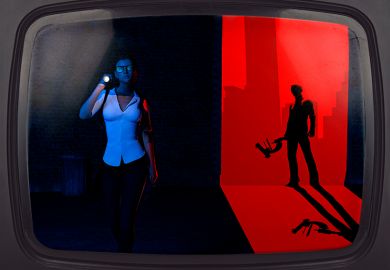Asking academics to admit their guilty pleasures on Twitter was, in hindsight, a risky move. Within a few hours my request for suggestions had gone viral and, within two days, my tweet had attracted hundreds of replies, likes and retweets, which generated more activity than all of my tweets combined from the previous four months.
Many warmed to the theme, with hundreds of scholars happily confessing their love of reality TV programmes, schlocky action movies, chick-lit novels and other film, literature and leisure choices that many would not pick out as the abiding passions of scholars.
Some also sought to reconcile their leisure choices with what they taught in the classroom – such as the Harvard scholar lecturing on feminist theory who admitted she was “obsessed” with US reality show The Bachelor, in which young women compete to become the wife of an all-American hunk.
But just as many responses objected strenuously to the premise. I put the word “lowbrow” in quotation marks, but I was criticised for, nevertheless, reinforcing “classist, gendered, racist ideas of culture”, as one appalled sociologist put it. Another denounced the “unashamed middle class snobbishness in academia” represented by my tweet.
Shami Schalk, assistant professor of gender and women’s studies at the University of Wisconsin-Madison, patiently explained how my tweet was part of the pernicious “high/low culture divide” that devalues genres associated with “racialised and gendered outgroups”. A better shout-out, she suggested, would have been: “What is something you love that society tells us is not valuable, intelligent or cultured?”
Another scholar thought that “unexpected activities or interests that help you survive in academia” was a more appropriate topic. And this is certainly a theme explored by our contributors, who make persuasive cases for why combat sports, tarot card reading and movies featuring talking cats and dogs make them better scholars – if only as a refreshing counterpoint to the rigours of scholarship.
I waded, somewhat clumsily, into a cultural minefield but my intention was never to convey any view on the notions of “high” and “low” culture, or any judgement on anyone’s tastes. The aim of this feature is simply to illustrate some of the breadth and colour of academics’ lives beyond the lab, library or lecture theatre. And, in that, at least, I hope readers will agree that it succeeds.
Jack Grove

‘I’m aware that writing and thinking about complex narratives is what keeps most of us busy. Yet I find it delightful to watch Hollywood’s pets go on a quest’
Between the ages of 7 and 9, I was convinced that all cats and dogs could talk. Moreover, they all spoke English. My dog didn’t confide in me, but that was easily explained by the fact that I didn’t speak English yet, since my first language is Romanian. My odd belief stemmed from an obsession with family movies featuring talking pets. Then and now, I take them all too seriously. But I confess that I’ve never brought them up over wine and cheese with members of my graduate programme in comparative literature at Stanford University.
As an academic, it feels peculiar to admit that I love happy endings and the pets who chase them. Stories that can be neatly wrapped up with a bow don’t make for innovative, or even interesting, scholarship. And yes, I’m aware that writing and thinking about complex narratives is what keeps most of us in the profession busy. Yet I find it delightful to watch Hollywood’s pets go on a quest to return home (Homeward Bound: The Incredible Journey, 1993), or save their humans (A Dog’s Purpose, 2017, and anything starring golden retrievers), or the world (Cats & Dogs, 2001), or their fellow pets (Cats & Dogs 2: The Revenge of Kitty Galore, 2010). I’m struck in a way that I don’t experience in academia, where scepticism and critique are the watchwords.
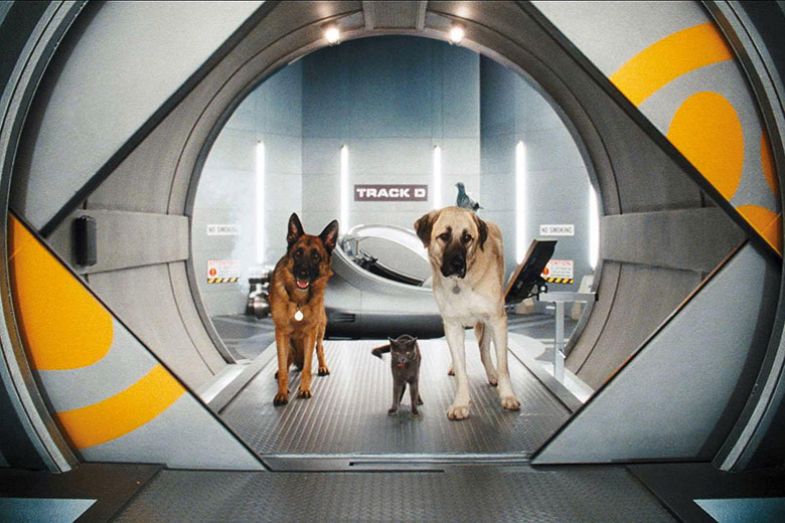
My doctoral research focuses on urban ruins in world literatures, and how artists and writers have transfigured decay. I spend most of my days thinking what living among ruins means to them, to us, and why ruination can be a conduit for creativity. My work has nothing to do with my ritualised consumption of all three parts of Beverly Hills Chihuahua every Christmas. I don’t intend to teach an undergraduate course on the relationship between the emergence of the animal welfare movement and the representations of anthropomorphised domesticated animals in Hollywood adventure comedies (although I’m pretty sure there’d be a waitlist). I’m not interested in the plot, and I don’t care for movies where the pets are silenced so that humans can ascribe meaning to the life lessons they impart. Nor do I care if the movie had a special effects budget big enough to endow the cats and dogs with superpowers. I want to hear from the pets.
Most of the dogs are usually good all round: they’re loyal and true and sacrifice themselves for each other or for their humans. They benefit from long-term memory so they can recall the idyllic puppyhoods they spent with their owners. Cats in movies, on the other hand, are more like people in the real world, which is to say, they’re in it mostly for themselves. They’re fickle and transactional with their affection – like most cats I’ve met in person.
Out in the world, being a pet film connoisseur makes me a hit at kids’ birthday parties. Leave me to babysit any two- to 12-year-old and neither of us will get bored. And although I would never admit to my adviser that I spent last weekend watching the 1998 remake of Dr. Dolittle and its four sequels, the only time I struggle with guilt is when I indulge in such binges despite knowing I should be writing something scholarly for a specific deadline. That is, when I know I haven’t earned the reward. In the toxic work culture of US academia, giving yourself permission to take a break, even for a mere hour and a half, is not something you do lightly.
According to Aristotle, suspension of disbelief is how audiences watching a play accept it as real. What follows is catharsis, or purification of the soul – which most scholars agree refers to the effect of aesthetics on our emotions. Are these movies art? Depends on who you ask, and whether they’ve read Pierre Bourdieu. But I have felt how these movies ignite wonder, and I can’t think of a better counterpart to academic scepticism. Aristotle would approve.
Elena Dancu will be graduating with a PhD in comparative literature from Stanford University in August. She earned a master’s degree with distinction from the University of Edinburgh.
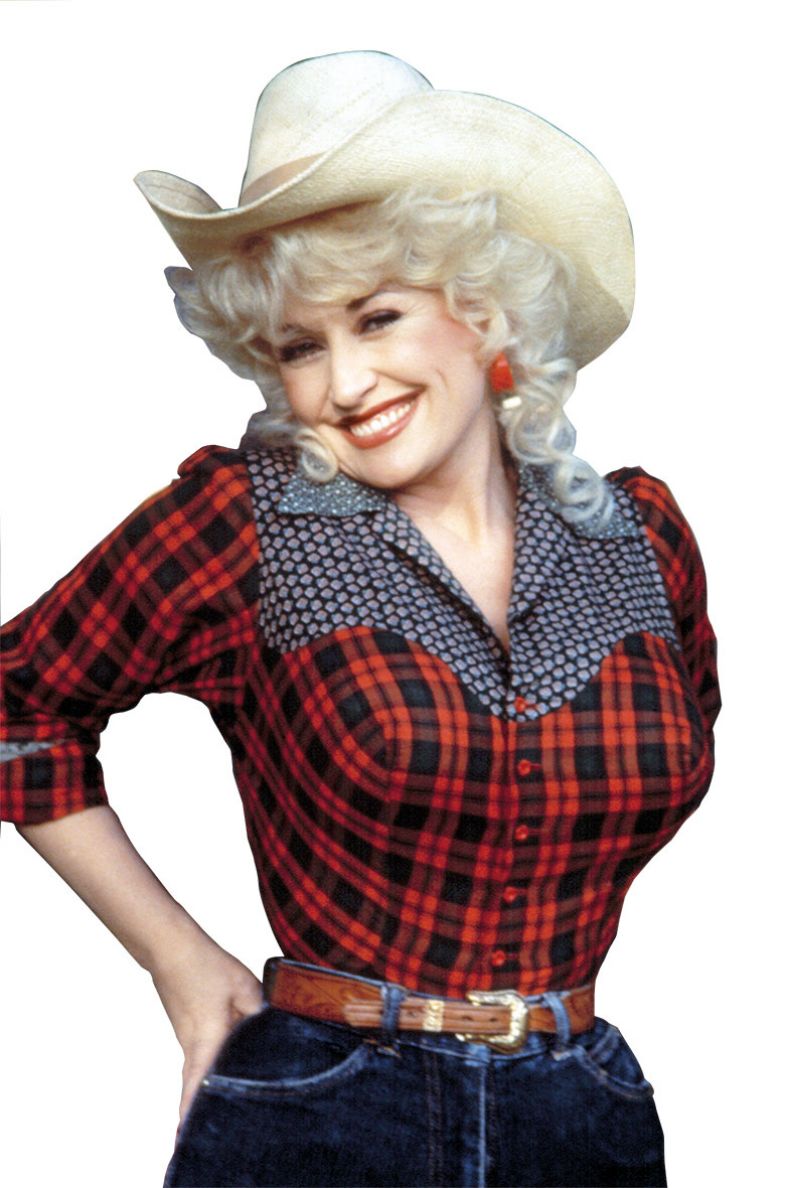
‘A rather chauvinistic take on Dolly as a sexual figure of fun is a mistake that many of those unfamiliar with the Parton oeuvre are prone to make’
Guilty pleasures, I’ve had a few – but not too few that I couldn’t mention one or two. But I’m not talking Sinatra. I’m talking Jeremy Kyle, the UK’s recently axed answer to Jerry Springer. I’m talking Heat magazine. And I’m talking Dolly Parton.
Admitting to being a fan of Dolly Parton is like confessing to a double taste crime. The first offence is to like country music, the favoured soundtrack of Make-America-Great-Again-hat-wearing, NRA card-carrying rednecks everywhere. The second is to like someone known more for her trademark Southern Belle image than any artistic endeavours or achievements.
This rather chauvinistic take on Dolly as a sexual figure of fun is a mistake that many of those unfamiliar with the Parton oeuvre are prone to make – and, to be fair, such preconceptions have been invited by Dolly herself. She deliberately cultivated that “cheap and whore-y” image, as she called it one interview, which was inspired by a hometown prostitute.
I also used to see her as a risible figure. That was until I heard a feature about her back in the 1980s on Andy Kershaw’s highly respected BBC Radio 1 show. Now I like to see her extravagant image as something of a punk statement – certainly as punk rock as it got for rural Tennessee. While “real artists” tended to be men who dressed like grizzled cowboys, many of them relied on the army of songwriters working in Nashville’s Music Row to produce the hits. Dolly needed no such ghostwriters, and the 3,000 songs she has written are testament to a creative and unique talent.
They include standards like Jolene, 9 to 5 and, of course, I Will Always Love You: a global hit for Whitney Houston. As an example of her song-writing skills, Kershaw played Coat of Many Colours. But my favourite is Down from Dover. A distant cousin of Joy Division’s Love Will Tear Us Apart, the gripping narrative arc that unfolds over its six verses is typical of Dolly’s best songs. This one is about a pregnant teenager who has been abandoned by the baby’s father and thrown out of home by her morally indignant parents. She finds work taking care of an elderly neighbour, yearning for her lover’s return from Dover (plot spoiler: he never returns and the baby dies at birth – a metaphor, I guess).
The song was included on her 1970 album masterpiece Fairest of Them All – I still have an original battered copy. The album also includes Robert, about a boy who falls in love with a girl not knowing that it’s his sister, and Daddy Come and Get Me about a woman institutionalised in an asylum.
Dolly was told at the time that such songs would never be played on the radio, but they are indicative of her willingness to take artistic risks. She hasn’t gone for the usual heartbreak and honky-tonk clichés, but has tackled controversial issues in her own style, challenging what is possible in a country song.
At the same time, Dolly has always stayed true to her country roots and its conservative music traditions. She hasn’t strayed into cultural Frankenstein creations like bro-country or country pop. If anything, she has been a standard bearer for authentic Americana and alt country. That genre also includes the likes of Wilco, Kacey Musgraves, Gillian Welch, Steve Earle and Roseanne Cash: the sort of country music it’s OK to like and that doesn’t leave you feeling aesthetically or ideologically compromised.
But, as Dolly once said, if you want the rainbow, you’ve got to put up with the rain.
Michael Marinetto is a senior lecturer in public management at Cardiff Business School.
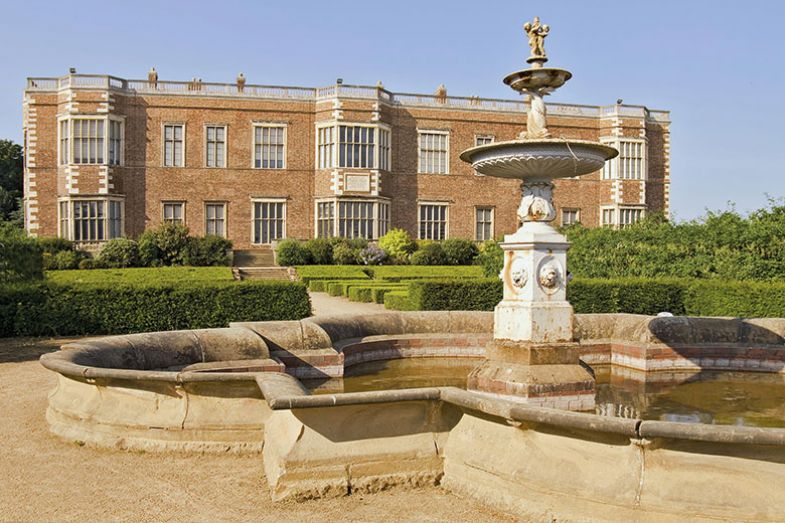
‘I wondered what it would be like to occupy those rooms, to sleep in that bed. But already the cracks were beginning to form, and I was feeling guilty’
As a group, academics tend to be wary of the term “guilty pleasures”, and the way it’s often used to describe culture consumed by women and the working classes.
My guilty pleasure is different. In the rural, working-class community in northwestern Pennsylvania where I grew up (where the typical response to learning that I was living in the UK was not “what are you studying?” but “are you stationed there?”), it is viewed as utterly unembarrassing, even impressive. But among academic peers, the response is much more critical. And, in truth, I feel conflicted.
During my 10 years in the UK, my appreciation for the welfare state grew in line with my understanding of the still-pernicious effects of the class system. But that growing leftism didn’t stop me from spending weekends and holidays indulging in an especially aristocratic form of Anglophilia: exploring stately homes.
I make excuses for myself. My mother is a fellow Anglophile and while growing up I consumed a steady diet of Victorian novels, Masterpiece Theatre and old episodes of the Antiques Roadshow. I fantasised about moving to England when I was quite young, bizarrely begging my mother to send me to boarding school after reading Frances Hodgson Burnett’s A Little Princess.
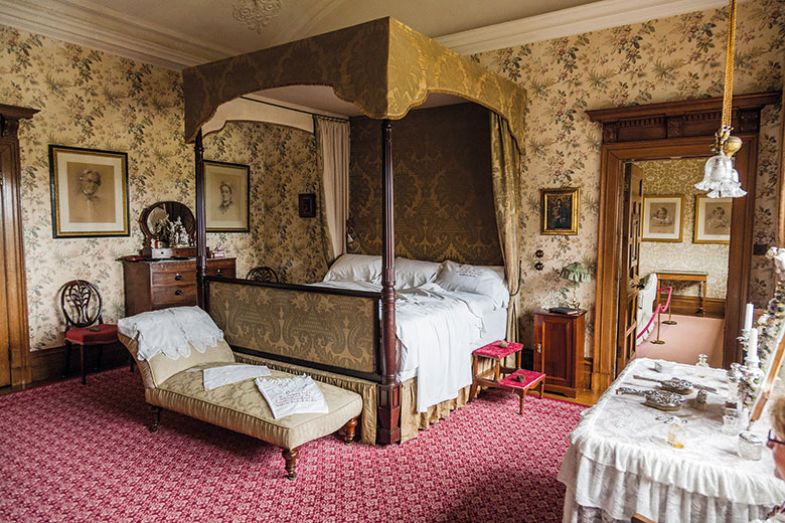
By the time I entered college, the dream of boarding school adventures was replaced with visions of wandering through the galleries of stately homes and appreciating the paintings, sculpture and furnishings I had learned about in art history classes. At that time, my understanding of such buildings was totally apolitical, which is to say that although I could interpret their architectural features, I had no real understanding of their history, what statements they were intended to make, or their impact on the communities of which they were a part. I thought of them chiefly as beautiful repositories for beautiful objects, which sometimes doubled as atmospheric sets for the costume dramas I watched.
I visited my first stately home within weeks of arriving in the UK. Temple Newsam, an imposing Tudor-Jacobean country house near Leeds, fired my imagination with its royal connections – it was the birthplace of Lord Darnley, Mary Queen of Scots’ second husband. The grounds were landscaped by Capability Brown, although I didn’t yet know who he was, and the house was filled with art that I took pleasure in recognising: still lifes from the Dutch Golden Age, portraits by Gainsborough and Reynolds, a painting by Vasari and several in the style of Rubens. There were also entirely unexpected delights, like the 300-year-old, crimson-curtained state bed, commissioned for a different country house and designed to curry favour with Queen Anne.
The house set the scene for imaginative time travel; I wondered what it would be like to occupy those rooms, to sleep in that bed. But already the cracks were beginning to form, and I was feeling guilty. My favourite object at Temple Newsam is the Baby House, an 18th-century cabinet doll’s house said to have been redecorated by Charlotte Brontë while she was governess to the Sidgwick children in the summer of 1839. I find the tiny cups and saucers enchanting, but, for me, it’s inseparable from Charlotte’s misery as a paid subordinate, forced to contend with “oceans of needlework, yards of cambric to hem, muslin nightcaps to make, and, above all things, dolls to dress”.
The beds and satin curtains, tapestries and collections of porcelain that I admire survived because they were cared for by domestic workers who are now largely forgotten and whose labour is often given scant attention at these sites.
Worse, many stately homes – though not Temple Newsam – were built with wealth accumulated through involvement in the transatlantic slave trade. And their decline is intimately connected with the development of the welfare state, of which I so strongly approve – due in part to death duties and increased income taxes.
These thoughts cast a shadow over my enjoyment and give me pause for thought. But no matter how many I visit, I still find stately homes irresistible. I’m a sucker for a state bed.
Amber Pouliot is an early career researcher focusing on Victorian literature and was, until recently, a teaching fellow at Harlaxton College, the UK study abroad centre of the University of Evansville, Indiana.
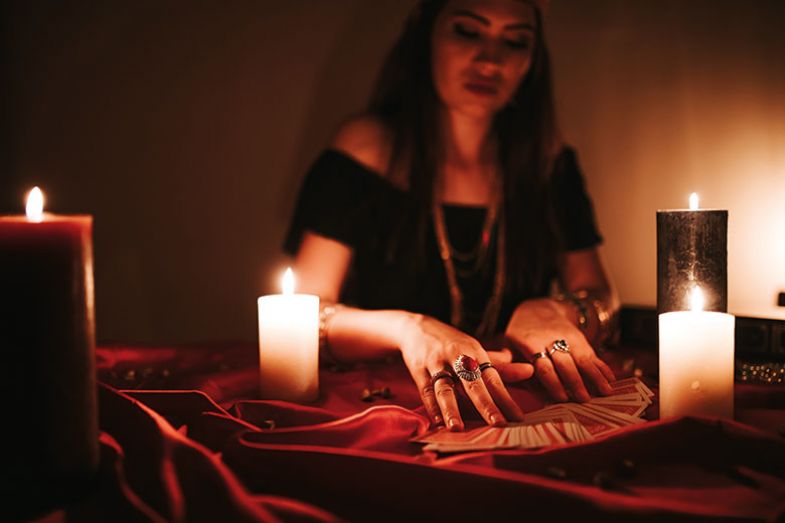
‘What has been the effect of my magical self-education? I’m sensing myself becoming able to more readily detect and articulate the unifying ideas in the manuscripts I work on’
My dining table, long piled high with academic articles and books, is now as likely to have tarot cards spread across it. The shelf where I keep volumes on literary theory and scholarly publishing is also accumulating works by astrologers and mystics. And at my window, the sun not only streams through the dozens of sticky notes mapping out arguments for my book-in-progress, but also refracts through a growing collection of crystals that I’ve been told have chakra-healing properties.
Somewhere along the way to finding my place within the scholarly enterprise, I seem to have become a little witchy.
Back in 2012, I finished my PhD in English and took to renting out my brain as a developmental editor. My job was to help clients transform their manuscripts from loose assemblages of claims and reflections into cogent expressions of a single unifying idea. The idea must be precise, yet universal – like "language heals", or "power absorbs wealth" or "death feeds life". These ideas have been thought and expressed countless times before, but they somehow find unique expression in each new work they hold together.
Once you clarify a project’s central idea, that idea tells you what to cut out of the draft, where to expand, and how to rearrange and reframe all the elements into a cohesive unit of meaning that the reader will find compelling. Initially, I understood the process as purely intellectual. And yet, any time I would work on a client project, that pause before the appearance of the unifying idea was like the wait for a divine revelation. I’d feel a mixture of hope, suspense and impatience. Mostly impatience.
I wanted so badly to coax the process along at my preferred speed, and I lived in fear that the ideas would stop coming one day. I’d study advice books and columns for scholarly writers, seeking guidance on how to summon the revelation, but no one seemed to be offering any tools or procedures for this part of the writing process, or even acknowledging its existence. The process resisted all efforts to describe it algorithmically or to hurry it along.
When you’re really stuck, the best course of action is often the one that’s both the most obvious and the most outrageous. My clients had been telling me for years that developmental editing felt like magic to them. So I decided one day, why not try literal magic? Not stage tricks or abracadabra-type spells. More like the magic that artists and healers might do – using intuition to tune in to the invisible energies and patterns of the universe, reading them like a text and communicating in their language.
And so I bought a tarot deck. And then a few more. And I read books on divination, and took a tarot course, and a second tarot course. I filled an entire notebook with interpretations for each of the 78 cards, poring over their rich visual symbols with the same intensity as I would dedicate to works of literature. My apartment gradually began to resemble Professor Trelawney’s attic in Harry Potter. Before long, I was buying lapis lazuli for my throat chakra and having the Sagittarius constellation tattooed on my wrist.
Six years into my practice, what has been the effect of my magical self-education? I’m sensing myself becoming able to more readily detect and articulate the unifying ideas in the manuscripts I work on. I can see that they aren’t so elusive after all; they’ve always been all around us. They are the abstract expressions of our tangible realities. So I no longer fear that the revelations will stop coming, and my work on each new project feels like the laying of another building block in the universe.
I do realise how far-fetched it sounds to claim that tarot is useful in academic research. No peer-reviewed study or academic advice book is going to back me up on this. But the truth is, even the most devoutly empirical among us believes in things we can’t explain – or at least recognises that empirical knowing has its limits.
Margy Thomas has taught academic writing at several US universities and runs Scholarshape, a support service for researchers developing manuscripts for publication.
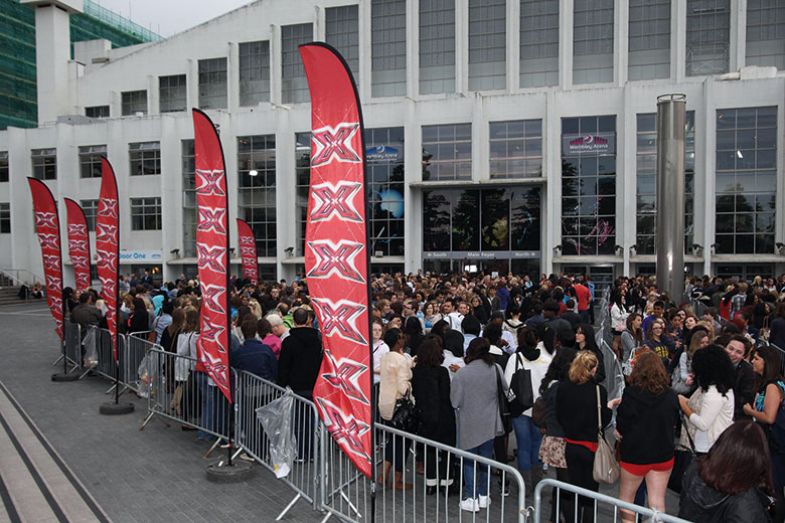
‘I was just as excited as the kids were at the prospect of joining the lucky 10,000 inside Wembley Arena and seeing the X Factor final live’
A decade ago, before my Generation Y daughter began to roll her eyes at me, I was a relatively hip mum. In her primary school years, I held themed parties in half-term, much to the bemusement of her friends’ parents, who couldn’t believe that I would open up my home to half a dozen energetic kids when it wasn't even an obligatory birthday celebration.
Later, I was the under-14s’ chaperone of choice when they wanted to go to concerts or festivals. The most memorable was in 2011, when the X Factor was mandatory Saturday night family viewing in the UK. You know: the time when the family watched TV live – all together, all watching one screen, taking it in turns to run out of the room during advertisements to gather the communal refreshments.
My daughter had been bugging me to take her to Wembley arena to try to get in to watch the talent show’s grand final. After months of watching the earlier rounds every Saturday and Sunday night, this really should have been a step too far – but I have to admit to being mildly amenable to the idea. It would be an evening out, after all.
That amenability was stretched to its limit as we – my daughter, her friend and I – turned up on a chilly December afternoon to find that thousands of people had already formed themselves into an eternally winding queue. There was more chance of picking up a bout of flu than any X Factor tickets, I reflected, as my fingers turned to ice and I could no longer feel my feet. But hope springs eternal and we steadfastly remained in the queue no matter how many times the stewards echoed my assessment of our chances.
We had silently resigned ourselves to remaining until every last member of the event team had disappeared. But, eventually, they made the announcement we had all feared: there were no more tickets and the crowd should clear the area. Disappointed, cold and weary, we stood watching the remaining die-hard fans disperse in a kind of limbo of indignant disbelief: the same feeling that forces you to call the employer after receiving a rejection letter despite acing the interview – just to make sure that the administrator has not mistakenly sent you the wrong letter.
In the midst of a dialogue with a friendly steward, who was extolling the advantages of our warm homes, my daughter’s friend noticed a man hurrying past us waving tickets in his hands. “Go back – they are giving out tickets!” he shouted. We scurried back and we were given literally the last three tickets. All three of us shrieked with delight.
That's the moment I had to confess (to myself at least) that I was just as excited as the kids were at the prospect of joining the lucky 10,000 inside Wembley Arena and seeing the X Factor final live, and we ran all the way to our seats.
They turned out to be restricted view, behind the huge television cameras, but it didn't matter at all. We were there! We sang, we danced and cheered like crazy when our favourite act – Little Mix – were crowned as the surprise winners.
But I didn’t mention any of that at work on Monday morning. It didn't seem appropriate when my colleagues were exchanging conference comparisons; I decided to keep my little weekend adventure to myself.
Karen St.Jean-Kufuor is principal lecturer in organisations, economy and society at University of Westminster.
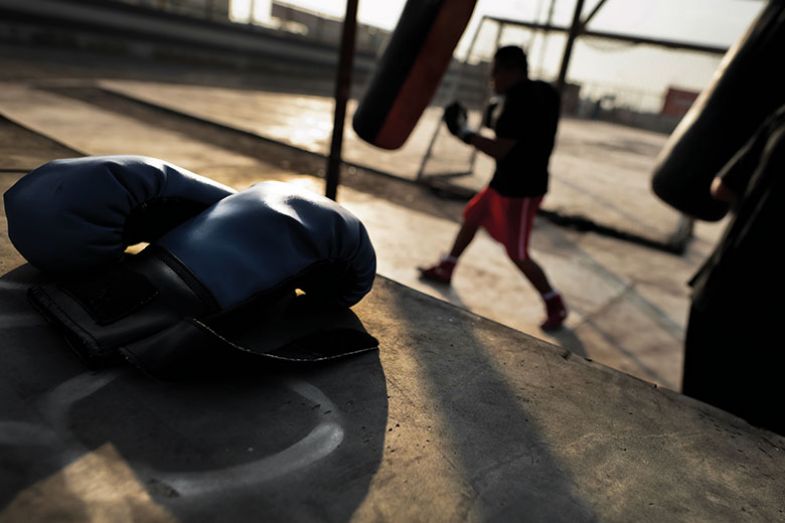
‘There are few places less intellectual than a boxing gym. Perhaps that’s why they are such a complete change from science’
I started boxing at 11 because my school gave me no option. I wasn’t terrifically talented at it, but better at it than I was at schoolwork. When I woke up to the value of science as an undergraduate I had so much catching up to do that there was no time for sport. But during my PhD, I went back to it because it provided a break from the stress of work in the lab. There is nothing quite as effective for taking your mind off work as being faced with someone who’s trying to punch you in the face. After that I kept it up, on and off, until I was 37, a long time ago now.
There are few places less intellectual than a boxing gym. Perhaps that’s why they are such a complete change from science. You mix with people from every walk of life and that’s good. The bit I didn’t enjoy was the air of toxic masculinity that prevailed in those days. I moved on to flying, sailing, long-distance running and mountain walking and almost forgot about combat sports.
But during the 1990s there was a resurgence of public interest in them. Now, ju-jitsu, muay Thai (Thai kick-boxing) and mixed martial arts (MMA) are probably all more popular participation sports than boxing. Large numbers of people started learning them and some went on to compete. One huge change that happened in the past 20 years was that women started to compete seriously, at a very high level, under the same rules as men. That has, to some extent, reduced the aura of male machismo that surrounded combat sports when I was involved.
The person who was most responsible for my resurgence of interest in combat sports was that remarkable polymath, Rosi Sexton. After a first-class degree in mathematics from the University of Cambridge, and a PhD from the University of Manchester, she went on to be a world-class MMA fighter, and is now a councillor for the Green Party. She seems to be a person for whom the fact that something looks impossible to most people is sufficient reason to conquer it. That’s impressive.
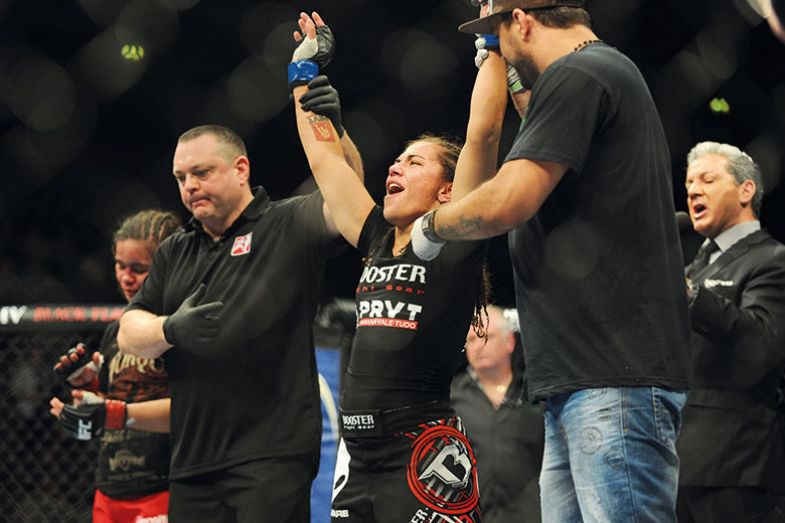
It seems to be part of human nature to want to do risky things – some much riskier than combat sports. Men and women climb mountains, play rugby, sail across the Atlantic, run marathons and do a multitude of other silly things, just to see whether they can. People do them because they are a bit dangerous rather than despite it.
If it had been around in my time, I’d probably have wanted to have a go at MMA. It’s now a well-regulated sport, and probably less dangerous than boxing because much of the time is usually spent grappling on the ground rather than punching. Because of the mixture of styles involved (wrestling, Brazilian ju-jitsu and boxing) there’s a lot to learn.
I much prefer doing things to watching them. Watching other people do things almost makes me feel guilty and I’ve watched only one live MMA event. The competitors were terrific, but the fans showed far too much vicarious armchair machismo for my taste. Perhaps that’s why I prefer amateur sports. As in every other professional sphere, money corrupts. At least you know that amateurs are there because it’s what they really want to do.
David Colquhoun is emeritus professor of pharmacology at UCL.
Register to continue
Why register?
- Registration is free and only takes a moment
- Once registered, you can read 3 articles a month
- Sign up for our newsletter
Subscribe
Or subscribe for unlimited access to:
- Unlimited access to news, views, insights & reviews
- Digital editions
- Digital access to THE’s university and college rankings analysis
Already registered or a current subscriber?






